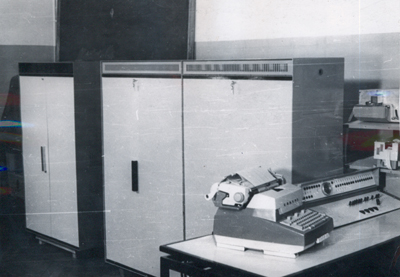|


Setun' 70 On the base of Setun's positive experience it was designed and exhaustively determined in Algol 60-like programming language the architecture of other ternary computer. This computer named Setun' 70 was introduced in 1970. In Setun' 70 the peculiarities of ternarity are embodied with more understanding and completeness: the ternary format for symbols encoding – tryte (analog of binary byte) consisting of 6 trits (~9.5 bits) is established; the instruction set is updated of auxiliary ternary logic and control instructions; arithmetic instructions now allow more variation of operand length – 1, 2 and 3 trytes and length of result may be up to 6 trytes.  The possibility to vary the length of the word-operands is expanded to the word-instructions. More exactly, in Setun' 70 the traditional conception of computer instruction as a word does not exists. The program is a sequence of tryte-operations and tryte-addresses. The executed combinations of such trytes may be interpreted as virtual instructions. But there is no necessity for a programmer to think about this – it is possible to construct postfix expressions directly from the operands and operations by similar way as it is made in mathematics. Setun' 70 is a two-stack computer. Stack of operands is the evolution of accumulator of one-address Setun' The return stack is the base of an automata that controls the nesting of subprograms. The simple improvement of such mechanism permits to transform Setun' 70 into some computer for the proposed Edsger Dijkstra's structured programming. Setun' 70 extraordinary architecture originated the Dialog System of Structured Programming (DSSP) - an advanced program development system. This was a fully functional procedural implementation of structured programming, providing a high degree of programmer productivity and program correctness, understandability, maintainability, and adaptability. It was also compact, extensible, and fast. The Dialog System of Structured Programming has shown itself to be an excellent tool for software design in robotics, medical monitoring, text processing, computer-aided didactics and testing, and programmed microcontrollers. An adequate realization of Dijkstra ideas named the "procedure programming", wholly proved his hopes about radical improvement of programming (the goal not achieved in "structured revolution". Construction and modification of the programs on "procedure programming computer" became more easily (in 3-5 times) and the perfect correctness has been achieved. However Setun' 70 was the last ternary computer. Some technical details are available here. |
||
|
|
|
|